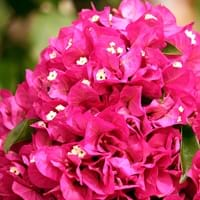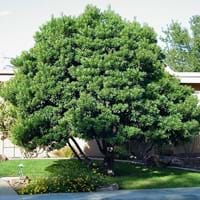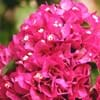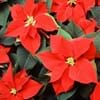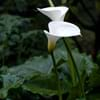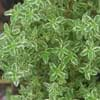Life Span
Perennial
Perennial
Origin
Hybrid origin
China, Japan
Types
Brasilensis, Easter Parade, Formosa, Rosenka (Orange), James Walker, Jubilee Showlady, Barbara Karst, Elizabeth Angus
it is a type of blueberry
Number of Varieties
Not Available
Habitat
Rainforest, Tropical rainforest
Not Applicable
USDA Hardiness Zone
9-11
9-11
Sunset Zone
22, 23, 24
H1, 8, 9, 14, 15, 16, 17, 18, 19, 20, 21, 22, 23, 24
Habit
Cushion/Mound-forming
Upright/Erect
Flower Color
Gold, Magenta
White
Flower Color Modifier
Not Available
Bicolor
Fruit Color
Brown, Green
Dark Blue, Black
Leaf Color in Spring
Dark Green
Green, Dark Green, Bronze, Orange Red
Leaf Color in Summer
Dark Green
Dark Green
Leaf Color in Fall
Dark Green
Dark Green
Leaf Color in Winter
Dark Green
Red, Dark Green
Leaf Shape
Tubular
Crescent-shaped
Plant Season
Spring, Summer, Fall, Winter
Spring, Summer, Fall
Sunlight
Full Sun
Full Sun, Partial Sun
Type of Soil
Clay, Loam, Sand
Loam, Sand
The pH of Soil
Acidic, Neutral, Alkaline
Acidic, Neutral
Soil Drainage
Well drained
Average
Bloom Time
Indeterminate
Late Spring, Early Summer
Tolerances
Salt
Not Available
Where to Plant?
Ground
Ground
How to Plant?
Grafting, Stem Planting, Transplanting
Rooted stem cutting, Seedlings
Plant Maintenance
Medium
Low
Watering Requirements
Medium
Requires watering in the growing season, Water when soil is dry
In Summer
Lots of watering
Lots of watering
In Spring
Moderate
Moderate
In Winter
Average Water
Ample Water
Soil pH
Acidic, Neutral, Alkaline
Acidic, Neutral
Soil Type
Clay, Loam, Sand
Loam, Sand
Soil Drainage Capacity
Well drained
Average
Sun Exposure
Full Sun
Full Sun, Partial Sun
Pruning
Cut or pinch the stems, Prune for shortening long shoots, Prune if you want to improve plant shape, Prune in the late winter or spring, Prune prior to new growth, Prune to control growth, Remove dead or diseased plant parts
Prune in winter, Prune when young, Remove branches, Remove short twigs
Fertilizers
All-Purpose Liquid Fertilizer
All-Purpose Liquid Fertilizer, Fertilize in early spring, Mulch
Pests and Diseases
Aphids, Leaf spot, Mealybugs, Red spider mite, Root rot, Whiteflies
Black Silt, Leaf rust, Sooty Mold
Plant Tolerance
Drought
Not Available
Flower Petal Number
Single
Single
Foliage Texture
Medium
Medium
Foliage Sheen
Matte
Glossy
Attracts
Hummingbirds
Birds
Allergy
Itchiness, Skin rash
Not Available
Aesthetic Uses
Showy Purposes, Used for decorating walls, fences, gates, hedges, etc.
Bonsai, Showy Purposes
Beauty Benefits
Not Available
For treating wrinkles, Skin Problems
Environmental Uses
Air purification
Air purification, Shadow Tree
Medicinal Uses
Not Available
Bone strength, Cancer, Diabetes, Digestion problems, Heart problems, High blood pressure, Improving mental health, Vitamin C, Weight loss
Part of Plant Used
Whole plant
Fruits
Other Uses
Showy Purposes
Edible syrup, Employed in herbal medicine, Used As Food, Used as Ornamental plant
Used As Indoor Plant
No
No
Used As Outdoor Plant
Yes
Yes
Garden Design
Container, Foundation, Groundcover, Hedges, Mixed Border, Rock Garden, Wall, Tropical
Hedges, Screening / Wind Break, Shade Trees, Street Trees
Botanical Name
BOUGAINVILLEA 'Helen Johnson'
ELAEOCARPUS decipiens
Common Name
Bougainvillea
Japanese Blueberry
In Hindi
Bougainvillea
जापानी ब्लूबेरी
In German
Bougainvillea
japanische Blaubeere
In French
Bougainvilliers
bleuet japonais
In Spanish
Bougainvillea
arándanos japonés
In Greek
Bougainvillea
ιαπωνική βατόμουρου
In Portuguese
Bougainvillea
blueberry japonês
In Polish
Bugenwilli
Japoński borówki
In Latin
Bougainvillea
Vaccinium Italica
Phylum
Spermatophyta
Not Available
Class
Dicotyledonae
Not Available
Order
Caryophyllales
Oxalidales
Family
Nyctaginaceae
Elaeocarpaceae
Genus
Bougainvillea
Elaeocarpus
Clade
Angiosperms, Core eudicots, Eudicots
Angiosperms, Eudicots, Rosids
Tribe
Not Available
Not Available
Subfamily
Not Available
Not Available
Importance of Bougainvillea and Japanese Blueberry
Want to have the most appropriate plant for your garden? You might want to know the importance of Bougainvillea and Japanese Blueberry. Basically, these two plants vary in many aspects. Compare Bougainvillea and Japanese Blueberry as they differ in many characteristics such as their life, care, benefits, facts, etc. Every gardener must at least have the slightest clue about the plants he wants to plant in his garden. Compare their benefits, which differ in many ways like facts and uses. The medicinal use of Bougainvillea is Not Available whereas of Japanese Blueberry is Bone strength, Cancer, Diabetes, Digestion problems, Heart problems, High blood pressure, Improving mental health, Vitamin C and Weight loss. Bougainvillea has beauty benefits as follows: Not Available while Japanese Blueberry has beauty benefits as follows: Not Available.
Compare Facts of Bougainvillea vs Japanese Blueberry
How to choose the best garden plant for your garden depending upon its facts? Here garden plant comparison will help you to solve this query. Compare the facts of Bougainvillea vs Japanese Blueberry and know which one to choose. As garden plants have benefits and other uses, allergy is also a major drawback of plants for some people. Allergic reactions of Bougainvillea are Itchiness and Skin rash whereas of Japanese Blueberry have Not Available respectively. Having a fruit bearing plant in your garden can be a plus point of your garden. Bougainvillea has no showy fruits and Japanese Blueberry has showy fruits. Also Bougainvillea is flowering and Japanese Blueberry is not flowering . You can compare Bougainvillea and Japanese Blueberry facts and facts of other plants too.
